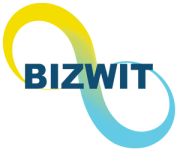Global Osteoporosis Drugs Market is valued at approximately USD 8.93 billion in 2022 and is anticipated to grow with a healthy growth rate of more than 3.9% over the forecast period 2023-2030. Osteoporosis is a medical condition that is characterized by low bone quality and density in humans. Additionally, this health issue causes the bones to become porous, which makes them more brittle and susceptible to fractures. The disorder is caused by an excess of the hormone parathyroid. The condition results in serious fractures, which are harmful to the patient’s health. Because of this, the problem needs to be treated, which involves taking medications for osteoporosis. RANK ligand inhibitors, parathyroid hormone treatment, calcitonin, and selective estrogen inhibitors modulators (SERM) are several medications available in the market. These medications are administered in ways including orally and intravenously. The surge in the geriatric population, adoption of a sedentary lifestyle, increasing healthcare expenditure, and rise in hip fractures are the several factors that are propelling the market demand during the estimated period.
In addition, the increase in the incidences of osteoporosis is playing a major role that is stipulating market growth across the globe. The prevalence of osteoporosis is increasing due to changing lifestyle habits, lack of physical activity, and poor diet. This has led to an increase in the demand for osteoporosis drugs. The International Osteoporosis Foundation stated that in 2020, 1 in 5 men and 1 in 3 women more than the age of 50 are likely to experience osteoporosis fractures in their life. Additionally, according to the International Osteoporosis Foundation (IOF), in 2019, the annual number of osteoporotic fractures in Europe accounted for 4.28 million, which is projected to increase and reach 5.34 million in 2034. The percentage growth during the 15-year period is likely to differ significantly by nation, from a low 8% growth (Latvia) to 58% (Ireland). Also, as per the National Osteoporosis Foundation (NOF), in 2020, over 10 million people in the United States have been diagnosed with osteoporosis, which is common in menopausal women. Consequentially, the rising cases of osteoporosis are significantly contributing to the market expansion. Moreover, the high growth prospects in emerging markets, as well as the increasing investment in R&D activities present various lucrative opportunities over the forecasting years. However, the stringent regulations on the drug approval process and the side effects of osteoporosis drugs are challenging the market growth throughout the forecast period of 2023-2030.
The key regions considered for the Global Osteoporosis Drugs Market study include Asia Pacific, North America, Europe, Latin America, and Middle East & Africa. North America dominated the market in 2022 owing to the surge in the incidence of osteoporosis, the presence of key players, and growing R&D investment. Whereas, Asia Pacific is expected to grow at the fastest growing over the forecasting years. The growing awareness regarding the use of osteoporosis drugs, rising government initiatives, increase in hip fractures, changing lifestyle, and growing demand for generic drugs are significantly propelling the market demand across the region.
Major market players included in this report are:
Amgen Inc.
Eli Lilly and Company
F. HOFFMANN-LA ROCHE LTD.
Radius Health, Inc.
Merck & Co. Inc.
Novartis International AG (Sandoz)
Pfizer Inc.
Sun Pharmaceutical Industries Ltd.
Takeda Pharmaceutical Company Limited
Teva Pharmaceutical Industries Ltd.
Recent Developments in the Market:
Ø In August 2021, The Drug Controller General of India (DCGI) granted Enzene Biosciences Ltd. marketing authorization (MA) for their biosimilar medication, denosumab, which is approved for the treatment of adult osteoporosis.
Global Osteoporosis Drugs Market Report Scope:
ü Historical Data – 2020 – 2021
ü Base Year for Estimation – 2022
ü Forecast period – 2023-2030
ü Report Coverage – Revenue forecast, Company Ranking, Competitive Landscape, Growth factors, and Trends
ü Segments Covered – Drug Type, Route of Administration, Region
ü Regional Scope – North America; Europe; Asia Pacific; Latin America; Middle East & Africa
ü Customization Scope – Free report customization (equivalent up to 8 analyst’s working hours) with purchase. Addition or alteration to country, regional & segment scope*
The objective of the study is to define market sizes of different segments & countries in recent years and to forecast the values to the coming years. The report is designed to incorporate both qualitative and quantitative aspects of the industry within countries involved in the study.
The report also caters detailed information about the crucial aspects such as driving factors & challenges which will define the future growth of the market. Additionally, it also incorporates potential opportunities in micro markets for stakeholders to invest along with the detailed analysis of competitive landscape and product offerings of key players. The detailed segments and sub-segment of the market are explained below:
By Drug Type:
Parathyroid Hormone Therapy
Bisphosphonates
Calcitonin
RANKL Inhibitors
Other Drug Types
By Route of Administration:
Oral
Injectable
Others
By Region:
North America
U.S.
Canada
Europe
UK
Germany
France
Spain
Italy
ROE
Asia Pacific
China
India
Japan
Australia
South Korea
RoAPAC
Latin America
Brazil
Mexico
Middle East & Africa
Saudi Arabia
South Africa
Rest of Middle East & Africa



